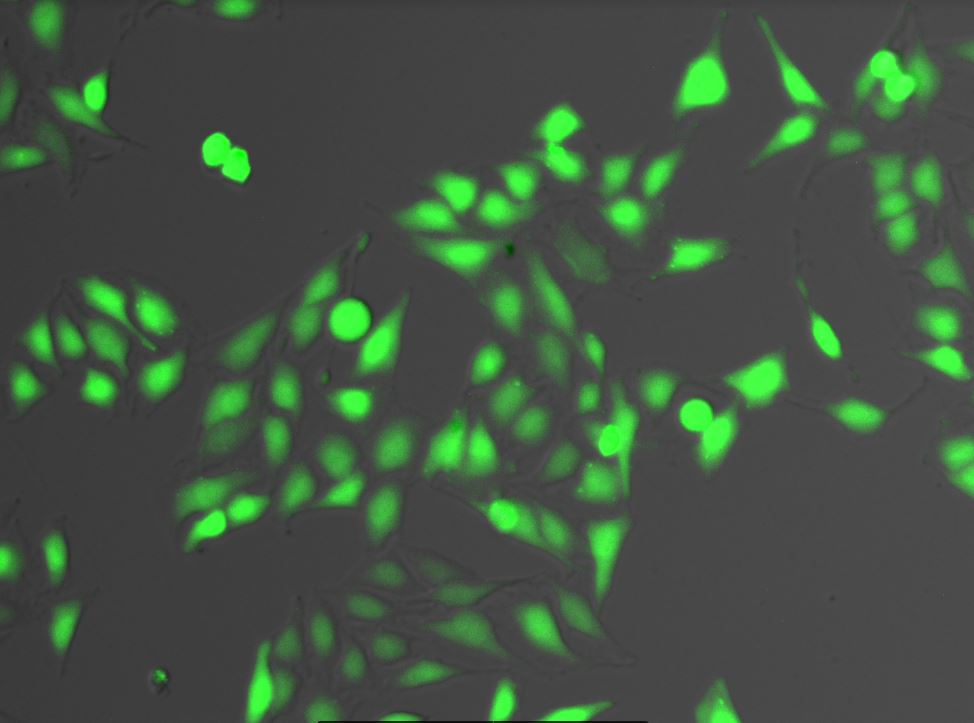Class Feature: Illuminating Disease with Chemical Biology
What is the difference between chemical biology and biochemistry? This may be a question that hasn’t crossed your mind before, but it’s important to a lot of students pursuing science. Despite the two topics comprising the same words, biology and chemistry, they are very different! While biochemistry focuses on manipulating systems that concern biological metabolism and protein function, chemical biology delves into using chemistry and chemical syntheses to aid biology.

Dr. Audrey Fikes, a postdoctoral teaching scholar in the Chemistry of Life program, majored in biochemistry as an undergraduate student. “I just remember thinking that it wasn’t what I thought it was going to be,” she said about biochemistry. She chose to pursue her passion for chemistry work and earned her Ph.D. in Chemistry from the University of Texas at Austin, studying metal homeostasis in cells. Now, her main focus is synthesizing small molecules to investigate a special class of proteins that require zinc.
Illuminating Disease with Chemical Biology is the BIT module that Dr. Fikes developed and currently teaches. Based on molecules from her work, Dr. Fikes gives students a list of various chemical groups that will bind zinc in the active site and a list of fluorophores that can turn on in response to zinc binding to the protein. Students use molecular docking to decide which combination of molecules, one zinc binder and one fluorophore, yields the best binding and fluorescence with the protein of interest, carbonic anhydrase. “Molecular docking takes the structure of a protein and uses an algorithm to figure out how best the small molecule can interact and bind with the protein,” Dr. Fikes explained. Essentially, it’s a way to use computers to check the rationality of your small molecule before working with it in the lab.
“It’s so easy to just buy a kit from Thermo Fisher, and you just don’t think about the time and effort that went into designing and developing it” – Dr. Fikes
Students then spend a class designing a retrosynthesis (a reaction where they know the product but not the starting materials/conditions) that they believe would yield their chosen small molecule. This can be intimidating, especially for those students who may not have a strong chemistry background. “I feel like most students, they enjoy learning about something that’s just widely different from anything they’ve ever done before. Also, I think it instills an appreciation for some of the tools and resources that you use as a biologist because it’s so easy to just buy a kit from Thermo Fisher, and you just don’t think about the time and effort that went into designing and developing it,” Dr. Fikes said.

Other techniques the students practice include silica gel chromatography, ultraviolet-visible (UV-vis) spectroscopy, and native SDS PAGE. The final week consists of an independent-design live-cell imaging lab. “I want [the class] to mimic what [the students] would be doing if they potentially were in a chemical biology lab… I give them leeway to make their own decisions, to a certain extent, about the molecules they choose. I just feel like you care more and are more invested when it’s something you choose,” Dr. Fikes said about the independent aspects of the course.
Dr. Fikes’ module is laid out so that students write a final manuscript and create a final presentation. However, throughout the course, students complete data analysis sheets where they prepare the graphs and charts, as well as answer questions that will be used in the final manuscript. There are also participation quizzes that account for a small percentage of a student’s grade. “Most of the students have taken BIT courses and they know they’re there to work hard,” she said.
“Even if [students] do figure out that ‘this isn’t what I want to do,’ I think that’s a good thing.”
-Dr. Fikes
Students often rely on BIT courses to help them figure out their future in biotechnology. Dr. Fikes sees a lot of students who originally come into the class wanting to be a chemical biologist, but change their minds once the semester ends. Although this brings some sadness to Dr. Fikes, it’s important for students, specifically undergraduates, to figure out what they are not interested in pursuing. “You don’t want someone to go into a career or grad school in a field they aren’t going to enjoy. So, even if [students] do figure out that ‘this isn’t what I want to do,’ I think that’s a good thing,” she said.

Chemical biology is interdisciplinary in nature, and Dr. Fikes kept that in mind when designing the course. She recommends her course to “students that have an interest in any type of interdisciplinary-based research, even if it’s not specifically going to be chemistry focused.” She mentioned how there have been many times when she was able to help those in biology by remembering a chemistry concept, and vice versa. If this sounds like a skill you think would be neat to obtain, enroll in Dr. Fikes’ Illuminating Disease with Chemical Biology module this upcoming fall semester!
- Categories: